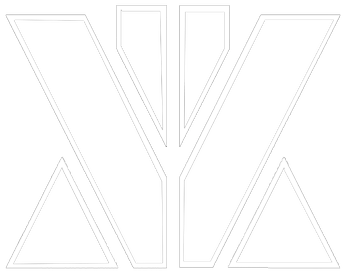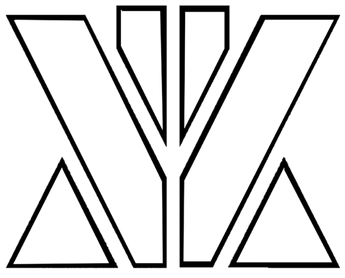Mansion Global: Miami-based Architect and Designer Is a Fan of the Urban Core
Project Summary
And to Kobi Karp, all luxury is relative
FEBRUARY 13, 2017
[caption id="attachment_12862" align="alignnone" width="810"] Kobi and some of his works; View from the balcony of an apartment at Fisher Island’s Palazzo del Sol. COMPOSITE: KOBI KARP ARCHITECTURE AND INTERIOR DESIGN, INC.; MARIA GALLI[/caption]
Kobi and some of his works; View from the balcony of an apartment at Fisher Island’s Palazzo del Sol. COMPOSITE: KOBI KARP ARCHITECTURE AND INTERIOR DESIGN, INC.; MARIA GALLI[/caption]
 Kobi and some of his works; View from the balcony of an apartment at Fisher Island’s Palazzo del Sol. COMPOSITE: KOBI KARP ARCHITECTURE AND INTERIOR DESIGN, INC.; MARIA GALLI[/caption]
Kobi and some of his works; View from the balcony of an apartment at Fisher Island’s Palazzo del Sol. COMPOSITE: KOBI KARP ARCHITECTURE AND INTERIOR DESIGN, INC.; MARIA GALLI[/caption]
Kobi Karp is the Miami-based founder and principal of Kobi Karp Architecture and Interior Design, Inc., a full-service firm that works on projects ranging from high-rise condominiums and hotels to small-scale residential and commercial structures. His buildings span the globe, from Miami to the United Arab Emirates.
Born in Israel but educated in the U.S., Mr. Karp began his career working on hospitality and all-inclusive resort projects throughout the U.S and the Caribbean, which brought him to his current hometown of Miami.
He recently worked on Fisher Island’s Palazzo del Sol, and just completed his work on the Four Seasons Surf Club Hotel & Residences in Surfside, Florida. He is currently focusing on Palazzo del Luna, on Fisher Island, Florida, and the Four Seasons Hotel & Private Residences in Fort Lauderdale, Florida. We caught up with Mr. Karp to chat about his love of nature, and how all luxury is relative.
Mansion Global: Describe your dream property.
Kobi Karp: A place that is connected with nature, that gives me quiet, peace of mind, relaxation, and an ability to enjoy life on a moment-by-moment basis.
MG: Do you have a real estate property that got away?
KK: Every time a project isn’t approved or doesn’t go as planned, I feel that way. But then I take a couple of days and see that it worked out in my favor.
MORE: Warburg Realty President Expects ‘Fascinating’ Year in Global Real Estate
MG: What does luxury mean to you?
KK: Luxury is a state of the mind. We just finished Lyric, an affordable housing rental building in Miami. It’s two blocks away from the upcoming train station in South Florida, and architecturally and spatially, it’s a beautiful space. For many, it’s luxurious to have a home there. It’s new and it’s fresh.
At the same time, we just finished a very nice project in Cape Town, South Africa, that’s on the promenade facing the historic lighthouse. You can see the whales right in front of you. People who I speak to like it and think it’s a luxury edifice because it’s surrounded by nature. All we did was create a glass box, which allows you to be part of nature.
We’re also doing a rental apartment complex in downtown Fort Lauderdale, which will have stores and commercial space downstairs. For many people, that’s luxury, to be able to go downstairs and do you shopping.
So, luxury can mean a lot of things.
MG: What area do you think is the next hub for luxury properties?
KK: We’re working across the board—as I said, we’re in Cape Town, but we’re also in Dubai; Bal Harbour, Florida; and El Paso, Texas. There’s luxury in every direction. People want a certain quality of life and serenity wherever they may be.
MORE: Redfin Economist Loves Bustling Cities and Sees Promise in the ‘Second-Tier’
MG: What’s the biggest surprise in the luxury real estate market now?
KK: We just finished the Four Seasons in Surfside, which was in a historic building. A lot of the buyers there were local Americans from Florida, and people from the Northeast. There were a few from South America, but most were Americans. I honestly thought there would be more foreigners, so that was a surprise.
MG: Where are the best luxury homes in the world and why?
KK: I travel the world, and I work in Saudi Arabia, Russia, Ukraine, Cambodia. There are beautiful luxury homes all over the world. I was born in Israel, and there are beautiful home there. With technology being so open, people have the opportunity to share their visions and ideas anywhere in the world.
MG: What’s your favorite part of your home?
KK: Any spot where I can watch the sun rise and set. Both are dramatic in Florida. I’m a Scorpio and I like to live near the water, too. I live in Miami Beach, and seeing nature humbles you on a daily basis.
MG: What best describes the theme to your home and why?
KK: House and garden—there’s a garden in the front and back. The garden in front is all about trees and shade, and in back there’s water and trees. On the side, we have green walls and shady trees and bamboos. The house is nestled in greenery and it opens up to nature.
MG: What’s the most valuable thing in your home?
KK: The ability to open up spaces to the outdoors, to the pool, and to the open bay, and to open up the front doors to the gardens. To swing on the hammock between two coconut trees.
MG: What’s the most valuable amenity to have in a home right now?
KK: A space that allows people to congregate. Ultimately most people congregate around the kitchen, but sometimes it’s around a fire pit, sometimes it’s a palm tree. It’s best to have a place that has all the resources people need—to eat, drink, talk, maybe watch videos. Often a high ceiling helps, too, because it makes it feel more spacious.
MG: What’s your best piece of real estate advice?
KK: Visit the site and look at it closely to figure out the value. In every site, the most valuable thing is the land.
MORE: Buy in the Best Area You Can Afford, Billionaire Argentine Developer Advises
MG: What’s going on in the news that will have the biggest impact on the luxury real estate market?
KK: Technology and efficiency are two game changers. We can already supply solar panels with some homes, and we can also sell solar batteries with those homes. Those are things that sound luxurious now, but will eventually be in every home. We can also take houses off the grid and they’ll have zero carbon footprint. They already do that in places like Finland.
MG: What is the best area now for investing in luxury properties?
KK: Urban infill. If I’m in Moscow, I try to look for a space near the Kremlin. In Israel, by the Citadel and Old City in Jerusalem. In urban cores, the infrastructure is there already and you can have a higher quality of life. The urban core is the secret.
MG: If you had a choice of living in a new development or a prime resale property, which would you choose and why?
KK: Sometimes it’s a combination of the two, where you’re redoing a historic structure from the inside—and we do that a lot. But you can have exclusivity in a historic structure, as well as in new structure. There’s value in both. They’re both right.
Click here to view full article.

